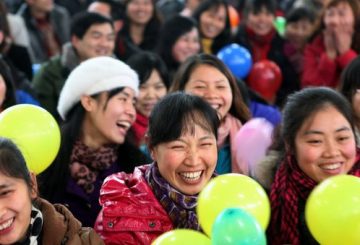Ang isang kamakailang ulat ay nagpapakita na ang isa sa tatlong mga taga-New Zealand ay naniniwala na ang kanilang kabutihan ay nasa pinakamababang antas nito. Ang ulat ng Lululemon Global Wellbeing, na isinagawa sa pagitan ng 1 Mayo at 5 Hunyo 2023, ay nagpapahiwatig na ang marka ng kabutihan ng New Zealand ay mas mababa sa pandaigdigang average.
Ang ilang mga pangunahing natuklasan ay kinabibilangan ng:
- 65% ng mga kalahok sa Kiwi ang tumitingin sa kabutihan bilang kanilang pangunahing pag-aalala.
- 47% ang nag-iisip na ang pagpapanatili ng mabuting kabutihan ay mahirap.
- 6% lamang ang nasiyahan sa kanilang kasalukuyang kabutihan, at 39% ang nakakaramdam ng pesimistiko tungkol sa estado ng mundo.
- Dahil sa cost-of-living pressures, 53% estado hindi nila maaaring unahin ang kanilang kalusugan at kabutihan.
- Ang mga miyembro ng komunidad ng Gen Z at LGBTQIA+ay nagpapahayag ng makabuluhang pag-aalala, na may kalahati ng Gen Z na inamin na iniiwasan nila ang pagtalakay sa kalusugan ng kaisipan at 50% ng mga respondente ng LGBTQIA+na nararamdaman na hindi nila maaaring tumutok sa kanilang kabutihan.
Ang mga panlabas na kadahilanan, tulad ng pagbabago ng klima, mga isyu sa politika, at pandaigdigang mga salungatan, na pinalala ng pagkakalantad sa social media, ay nakakaapekto sa kalusugan ng kaisipan. Bilang karagdagan, ang mga batang magulang ay nakakaranas ng trabaho sa pagbabalanse ng stress, mga tungkulin sa sambahayan, at pangangalaga sa bata.
Ang mga akademiko sa Unibersidad ng Otago, na nagsusulat para sa The Conversation, ay nagtanong kung mayroong isang “pandemya ng kabutihan”. Iminumungkahi nila na habang ang pag-unawa sa kabutihan ay nagbabago, ang mga indibidwal ay maaaring maging labis na kritikal sa sarili, na humahantong sa mas mataas na kahinaan sa mga taktika sa marketing na nagtataguyod ng mga solusyon sa kalusugan.
Para sa mga naghahanap ng suporta, maraming mga helpline, kabilang ang Lifeline at Youthline
, ay magagamit.
• Lifeline: Tumawag sa 0800 543 354 o teksto 4357 (HELP) (magagamit 24/7)
• Suicide Crisis Helpline: Tumawag sa 0508 828 865 (0508 TAUTOKO) (magagamit 24/7)
• Mga serbisyo sa kabataan: (06) 3555 906
• Youthline: Tumawag sa 0800 376 633 o teksto 234
• Ano ang Up: Tumawag sa 0800 942 8787 (11am hanggang 11pm) o webchat (11am hanggang 10.30pm)
• Depression helpline: Tumawag sa 0800 111 757 o teksto 4202 (magagamit 24/7)
• Helpline: Kailangan mong makipag-usap? Tumawag o teksto 1737
Kung ito ay isang emerhensiya at sa palagay mo ay nasa panganib ka o ang ibang tao, tumawag sa 111





























































